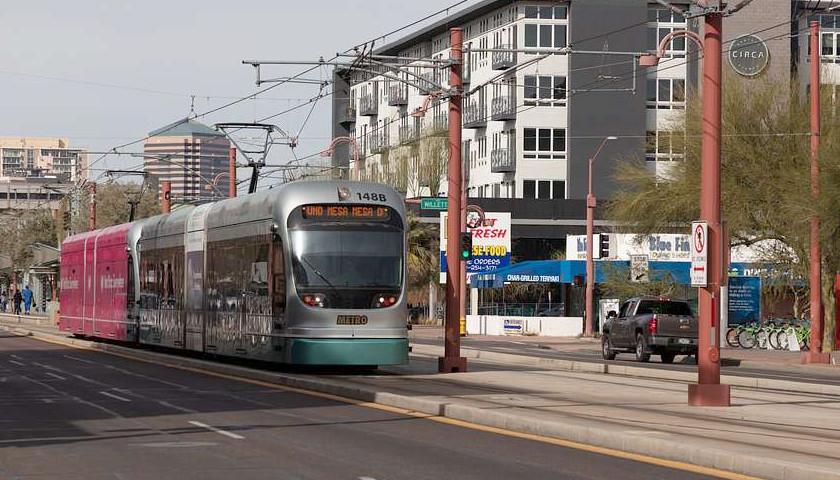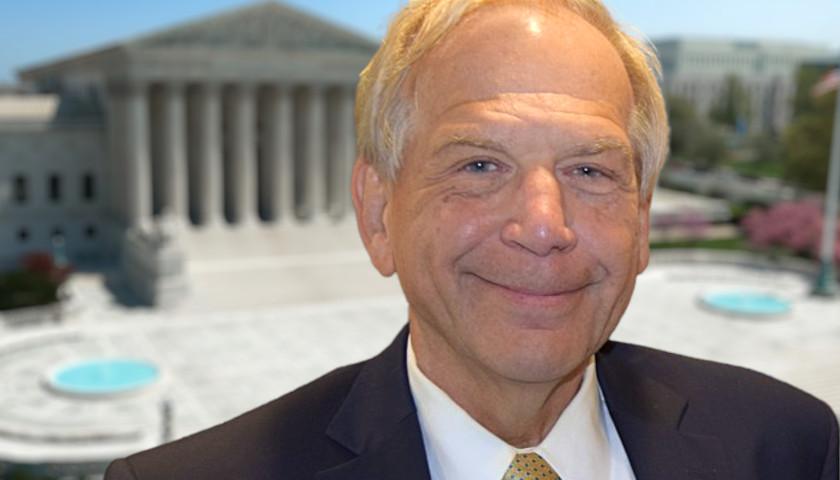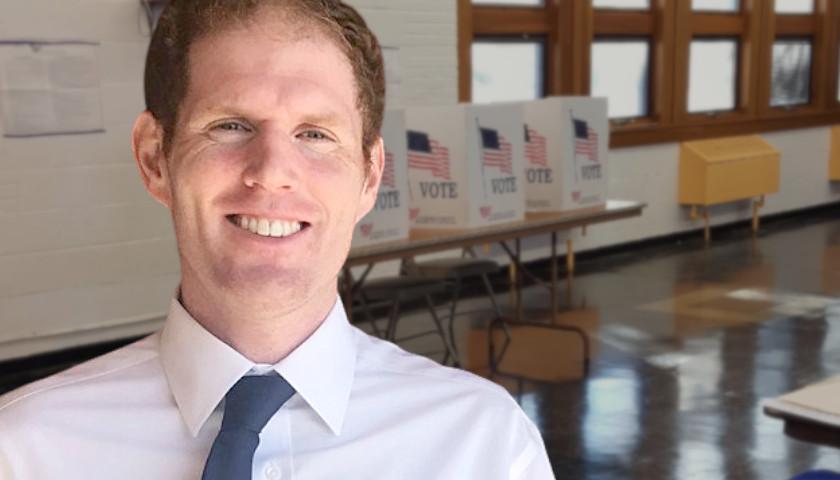Arizona Free Enterprise Club released a new report criticizing the Maricopa Association of Governments (MAG) proposed plan for the Prop. 400 half-cent tax.
The Prop. 400 half-cent tax, which started in 1985 to pay for public transit and then light rail in Maricopa County, faces strong opposition every time it comes up for renewal.
The report said the MAG’s proposal fails to consider the permanent transformation of society due to COVID-19, which significantly reduced the number of workers using public transit as people shifted to working from home and remained there.
Randal O’Toole, a transportation scholar who authored the report, stated that the number of cars has increased on the roads, surpassing pre-COVID-19 levels. “In the Phoenix urban area, for example, telecommuting tripled between 2019 and 2021, which in turn reduced transit ridership by more than 40 percent,” he said. “However, it increased Phoenix-area driving by nearly 20 percent.” Now, Phoenix residents “do more than 95 percent of their passenger travel by automobile.”
In Phoenix, public transit carries less than 1 percent of travel. Yet, transit advocates who call for “balanced transportation funding” don’t mean they would allocate it to reflect that proportion, O’Toole said. MAG’s proposed plan allocates 27 percent to public transit and 65.7 percent of funds to freeways, streets, and bridges.
O’Toole said light rail has been a failure.
“Even before the pandemic, MAG’s transportation plans were failing, primarily because of MAG’s decision to use a high-cost, low-capacity form of public transit that resulted in fewer transit riders, more traffic congestion, and more pollution emissions.” He said the decision could have been avoided if “a standard rational planning process that is taught in every urban planning school” had been implemented. “The most obvious result of this failure to implement the most basic of planning procedures has been the waste of some $3 billion on construction of an obsolete, high-cost, low-capacity transit system that did Phoenix transit more harm than good and contributed to increased congestion and air pollution.”
O’Toole explained how the federal government provides large amounts of money to cities for public transportation, allowing them to spend far more than necessary on light rail instead of spending less on buses that move far more people.
Another failure of MAG was failing to include other alternatives to the heavy light rail proposals, O’Toole said.
“Congress requires metropolitan planning organizations such as the Maricopa Association of Governments to write regional transportation plans and to revise them about every five years,” he said. “Yet none of MAG’s recent regional transportation plans, including plans issued in 2003, 2014, 2017, or 2021, included a wide range of alternatives, an evaluation of those alternatives, or monitoring of the effects of the plans.”
Also, the report said, “MAG’s plans failed to solve growing traffic fatalities and increased transit crime.”
The decline in the use of public transportation started before COVID-19. The city of Phoenix “grew by nearly 25 percent between 2009 and 2019, yet transit ridership was stagnant or falling, resulting in a significant decline in trips per capita,” O’Toole found.
After COVID-19 hit, “transit ridership collapsed to 55 percent of 2019 levels and appears to have plateaued at that level.”
O’Toole explained why self-driving increased.
“Driving has grown above pre-COVID levels because, as several research studies have found, people who work at home actually drive more than people who commute to work.” A study at the University of Minnesota found that “in 2019, a typical resident of the Phoenix urban area could reach almost twice as many jobs in a 20-minute auto drive as a 60-minute transit trip.”
O’Toole said Valley Metro made false claims about light rail promoting economic development. The transportation agency pointed to new construction due to the light rail. However, “These included gas stations, a car dealership, a parking garage that specifically could not be used by light-rail riders, various government and university buildings that would have been built anyway, hundreds of parking garages and parking lots, and scores of housing projects that received subsidies of their own.”
MAG conducted surveys of the public, which it claimed showed support for its transit plans. However, O’Toole said the questions were vague, broad, and did not disclose the high costs.
Building more roads does not lead to an increase in drivers on the road, O’Toole argued.
“[I]f this were true, then Nevada’s highway 50, the ‘loneliest road in America,’ would be as congested as the busiest freeway in Los Angeles,” he said.
Social justice advocates contend that public transit helps low-income workers. But O’Toole pointed out, “If only 1.9 percent of low-income workers in the Phoenix area are taking transit to work, that means the other 98 percent are disproportionately paying taxes for transit rides they rarely if ever take.”
He denounced the plan, “[I]t was obsolete before it was published.”
O’Toole said he believes the plan should be labeled a “scheme.”
He said, “The secret in this case is that MAG’s regional transportation plan has a hidden agenda, a plot to transfer billions of dollars a year from taxpayers’ pockets to contractors and other special interest groups for programs and projects that will produce little or no benefit to the taxpayers.”
O’Toole provided several recommendations to improve the traffic situation, such as coordinating traffic lights better, including more careful throttling of the lights on the freeway on ramps. He lists some safety suggestions, such as utilizing a data-driven incident reporting system aimed at fixing problems instead of “finding people to blame for the problems.”
The report included photos of empty light rail cars and stations. O’Toole said, “The Maricopa Association of Government’s regional transportation plans have helped bilk Maricopa taxpayers out of billions of dollars spent on a light-rail system that was obsolete 94 years ago and that especially makes no sense in a region such as Phoenix that has no major job or population concentrations.”
MAG’s proposed plan will be made into a bill in the Arizona Legislature. Last year, Gov. Doug Ducey vetoed an extension. The current extension expires in 2025.
– – –
Rachel Alexander is a reporter at The Arizona Sun Times and The Star News Network. Follow Rachel on Twitter. Email tips to [email protected].








